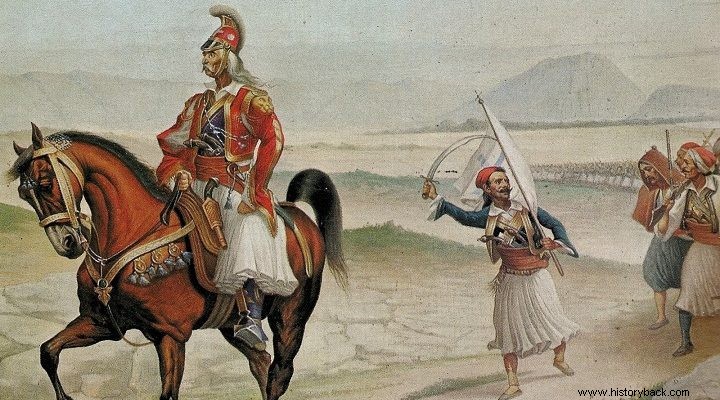
In February 1825 a new formidable opponent set foot on Moria. It was Ibrahim, the stepson of the Egyptian dynast Mehmet Ali, who arrived at the head of regular troops, commanded by French and Italian officers. The Greeks had nothing to oppose him. Nothing, except the Old Man of Moria.
Ibrahim was allowed to land undisturbed in the Peloponnese in the first days of February 1825. The government of "politicians" under Georgios Kountouriotis was unaware of the situation. After all, it was still celebrating the victories of its "triumph" in the bloody second civil war , having in fact Theodoros Kolokotronis ironworker in Hydra.
The destitute Kountouriotis tried to intercept Ibrahim himself but the Egyptian marshal easily crushed him in the battle at Kremmidi in Messinia. A new campaign against them was undertaken by Papaflessas, but he was defeated and heroically killed at Maniaki on May 20, 1825. Nothing seemed capable of stopping Ibrahim's regular troops. Everyone's last hope was the imprisoned Kolokotronis. Under popular pressure, Kountouriotis was forced to release him. However, Ibrahim had already made his move.
Ibrahim had about 700 cavalry, 8,000 regular infantry and at least nine cannons. There was only one way for Kolokotronis to stop them. To hold the crossings of Mount Trambala , from where Ibrahim could cross into Arcadia threatening Tripolitsa. Immediately the Old Man gathered his divisions and seized the heights of Trambala. A total of about 3,800 Greek warriors gathered, who took up positions on the slopes of the mountain and built high drums.
The battle is on
With the first light of June 5, 1825, Ibrahim, having located the Greek positions, began the attack. His battalions formed in assault phalanxes, after the French pattern, drew up with bayonets drawn, at the exhortations of their officers, shouting "Allah, Allah." The Greeks waited for them coolly and when they got close enough they gave the first "fire". Dozens of Egyptians fell and their phalanxes were shaken, but they continued the attack. The corps of Yatrakos was particularly pressed and, suffering serious losses, he was forced to retreat. Apart from this accident, however, the entire Greek site remained intact.
The next day, June 7, Ibrahim ordered nine guns to be placed opposite the main Greek battlements and flattened. The Egyptian gunners, led by their French officers, really opened a murderous fire upon the Greeks, to which they could not return. But then new pages of heroism were written with the lads grabbing the Egyptian mydroids before they exploded and throwing them with their hands out of the drums. Others fell on the shells with their capes and were killed themselves, saving the lives of the others.
Thus the heroism of the Greeks stopped Ibrahim's balls. When the Egyptian infantry rushed out, they were received with heavy volleys from the Greek rifles. Seeing their attacks fail, Ibrahim decided, the next day, to attack Plaputos' body on the extreme left of the Greek line. This he did and with the combined action of infantry and cavalry he managed to repel this body and open the passage to Leontari. A few hours later the Egyptian cavalry was at the rear of the fighting Greeks. Even then Kolokotronis was not disappointed.
He ordered the lads to continue the "war" until nightfall and attempt to escape in the dark. This is how it happened and the unhooking was achieved with minimal losses. In total, in the battle of Trambala which lasted three days, the Greeks had 110 dead and wounded, while Ibrahim had 700 dead and many more wounded. Nevertheless, he had achieved his strategic goal. He was now able to advance as far as Tripolitsa. The Greeks, although they showed courage and self-sacrifice in the battle, were finally defeated, because, as the Elder said:"Braimis was not like the Turkish pasades. He is a general of science, with a staff and abundant means of war".
